The Best Shot Placement for Moose
Do you want to know the best shot placement for moose? Learn to visualize where your bullet or arrow is going to go into the animal!
Moose are large animals, but that does not mean you can aim just anywhere and expect to knock down your game. You have a responsibility as a hunter and a human being to kill your game quickly and with as little suffering as possible.
 Image thanks to www.hunter-ed.com If you are looking for an on-line hunter education course in any state in the USA, the place to visit is www.hunter-ed.com
Image thanks to www.hunter-ed.com If you are looking for an on-line hunter education course in any state in the USA, the place to visit is www.hunter-ed.com
Study the image and look closely at the areas defined as blue color. Getting your projectile into this area you will get your moose. Be sure that your shot angle does not become so sharp that the bullet or arrow penetrates the area behind the liver (the orange area) because this is where the stomach is.
What is the
Best Shot Placement for Moose?
Ideally a broadside shot thought the heart which is also through both lungs. Use the rule of thirds for a broadside shot. Line up the back edge of the front leg and visualize the body in thirds. Aim up from the chest on quarter to one third the total chest thickness (height) and you will be on the mark.
When we practice shooting, most of us shoot at bulls eyes. I know some of you will have shape targets, and some archers will shoot 3D, but by far the majority are shooting at dots.
Moose do not have bulls eyes painted on them!
We practice shooting bulls eyes, then we go into the field and shoot at shapes. You know somewhere between here and there... consider the angle... how about the wind... do you need to worry about the distance? How do we deal with all this?
Visualization!
Pretend there is a bulls eye on the animal, pick out an exact spot and concentrate on it... make this your bulls eye and you will find the best shot placement for moose, or any big game animal for that matter.
What if Something Goes Wrong?
If you shoot any animal in the stomach you have a high chance of never finding it. An animal with a stomach injury can still travel a long ways... in the case of a moose that translates into many miles. A belly injury does not bleed or very little. There will not be enough blood to track.
What to do if you suspect you have shot your animal in the stomach?
If your shot placement was not good, for whatever reason...
Put on your patience hat! Wait! Seriously... wait for hours! Maybe overnight will be required before you take up the trail.
Proceed slowly and quietly. Remember that a stationary animal will see movement far quicker than you will see a stationary animal while you are moving. In other words when you are not moving you will see much more than you can than when you are on the move. So this hold true for animals too, especially because they spend their entire lives avoiding predators.
When you do start tracking, watch for tracks, a spot of blood or possibly disturbed rocks or sticks. Often and stomach injured animal if left undisturbed will bed down shortly after its injury. If enough time has elapsed the animal will stiffen making it difficult to escape. Difficult but not impossible, this is why you my track and proceed slowly.
Need some more awesome moose hunting tips?
Read our book: The Ultimate Moose Hunting Guide
Injured Animals Travel Downhill
In general an injured animal will travel downhill and back in the direction from which it just came.
Why?
The path of least resistance is downhill and the area he just came from was safe.
Circling
Another trait of moose is to circle just before bedding down. Visualize the letter "P" but without closing the loop. They do this to get down wind of and watch for predators that may be following them.
On two occasions I have observed injured moose bedding down under a very thick bush where they later expired. I suspect they have chosen these locations for security against predators, because it makes them harder to spot.
Making use of a wind indicator is a good idea in order to detect wind.
Practice
Before you go...
In order to make your shots count, it is very important to practice.
Archers, I suggest you buy yourself some sort of Big-game 3D Target to practice shooting at. I have found the act of shooting at a shape rather than a bulls eye is better for archery practice.
Rifle Hunters, you should be practicing with a good sight-in rifle paper target out to the ranges you are comfortable with.
Summary
- Learning the anatomy of a moose will provide the hunter with a better understanding for shot placement for moose.
- When tracking moose, injured or not these points will help the hunter understand their habits so they will be better prepared and know what to expect.
Want to learn how to hunt moose? Or are you wanting to increase your moose hunting skills?
Look no further!
Our moose hunting tips book is written with
not just the novice in mind, there are tips in the book that even the
most seasoned moose hunter will find of value.
The book includes 57 chapters, with more than 150 pages of information, jam packed with tips, techniques and discussions - The Ultimate Guide to Moose Hunting!
And don't forget to order one of our Fiberglass Moose Calls. In stock and ready to ship.
Top of the Shot Placement for Moose
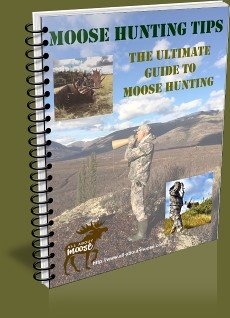
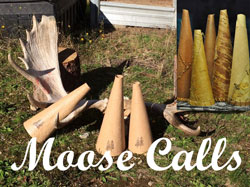
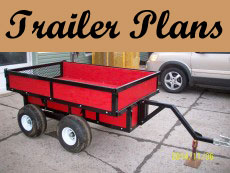

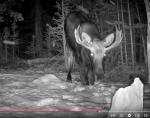
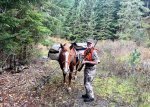
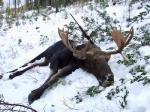
Comments
Have your say about what you just read! Leave me a comment in the box below.